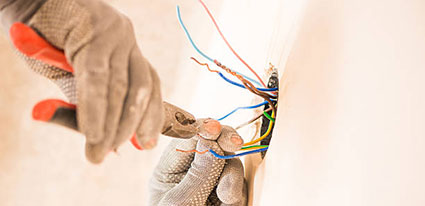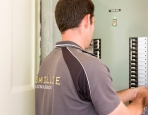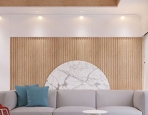In Australia, the main method used to wire lights is called the ‘loop at the light’ method.
How does this method work?
The loop at the light method works by using batten and rose light mountings to create extra blank terminals which are used to join the loop wires.
In the majority of Australian lighting home installations, a three core thermoplastic sheath cable is installed to give a power supply directly into the light mounting.
This active power is directed away from the loop terminal and into the switch, using a conductor. This switch is attached to a circuit, which then directs the power back through a second conductor and into a lamp.
Two choices for setup
Using the loop at the light method, electricians can choose between two single core or one double core thermoplastic sheath cable.
By using the loop at the light method, electricians can loop out to other lights along the same circuit, or even to separate lights which are switched on through other circuit boards.
This means that two lights might have the same power supply cable but each of them could have their own individual switch.
The loop at the switch method
The loop at the switch method for wiring is more commonly used in the UK than in Australia, however it can still be found in some homes within Australia.
The principle behind this type of wiring is similar to that used in the previous method, in that the cable supplies power from one light to the unit.
However, the cable in this setup supplies the light to the light fitting and there will be just three wires within the light. These wires will be live, neutral and earth wires. The earth and neutral wires are permanently connected to the power supply, whereas the live cable will be connected to the switch.
The switch is what is used to connect the two terminals – by turning the switch on, you are connecting the circuit terminals and activating the light.
Two-way switching
Two-way switching is another method for wiring, and it is similar to other wiring methods, although not as commonly used. The reason it isn’t used as frequently is because this method requires there to be a large number of wires installed behind the switch circuit.
Because of this, the switch will often need a bigger area behind it to hold the wires, creating the need for a deeper backbox.
Wiring regulations in Australia
It is not safe – and in many cases it is against the law – to do the wiring of house lights in Australia if you are not a qualified electrician.
Therefore, this article is for educational purposes only, and not DIY purposes(unless you have the proper qualifications).
Here to assist with all your wiring needs
If you would like to get your home professionally wired with new house lights, then please contact us today. Our friendly and professional team is here to help you with all your electrical needs.



